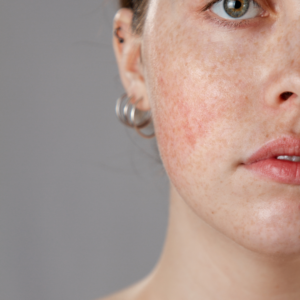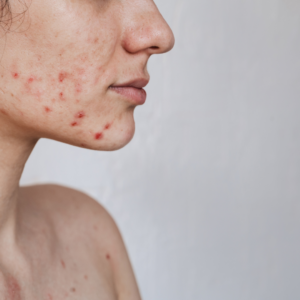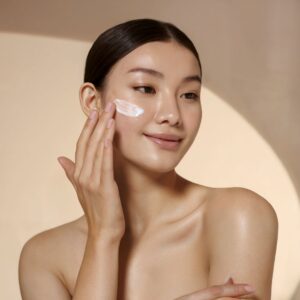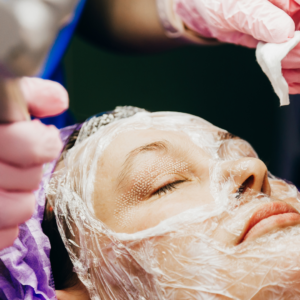
Rosacea Awareness Month: Signs, Symptoms & Treatment Options
Discover a youthful lift without surgery. Learn how our thread lift at Bryn Mawr Dermatology can rejuvenate your appearance.
We’ve all heard it before—wear sunscreen every day! But have you ever wondered why it’s so important, or how to pick the right one? Beyond preventing sunburns, sunscreen is one of the most powerful tools we have for protecting our skin from premature aging, sun damage, and skin cancer.
With so many choices out there, it can feel overwhelming to know which one is best for you. Should you go with SPF 30 or 50? Mineral or chemical? What if you have sensitive or acne-prone skin?
We’re here to simplify it. In this post, we’ll break down what SPF really means, the ingredients you should look for (and avoid), and how to find the right sunscreen based on your skin type and lifestyle. Let’s dive in!
While this article spells out some important information about sunscreen, we highly recommend you read the full article, here are the key points we will focus on:

SPF stands for Sun Protection Factor. It measures how well a sunscreen protects your skin from UVB rays—the ones responsible for sunburn and contributing to skin cancer. The higher the SPF, the longer it takes for UVB rays to cause redness compared to unprotected skin.
According to the FDA, SPF 30 blocks 97% of UVB rays, while SPF 50 blocks 98%, showing that no sunscreen provides 100% protection. However, SPF alone doesn’t indicate protection against UVA rays, which penetrate deeper and contribute to premature aging. That’s why choosing a Broad-spectrum sunscreen is essential for complete sun defense.
A higher SPF provides stronger UVB blockage but does not extend how long you’re protected. Many assume SPF 50 lasts longer than SPF 30, but all sunscreens need reapplication every two hours for continuous protection.
SPF 30 or higher is recommended for most people, but those at higher risk of skin cancer or exposed to intense sunlight may benefit from SPF 50 or above. Reapplication, not just SPF, is key to sun safety.
A great sunscreen does more than just block rays—it supports your skin while doing it. Here are a few ingredients to keep an eye out for:
Chemical vs. Mineral Sunscreen: What’s the Difference?
There are two main types of sunscreen: chemical and mineral sunscreens. Both protect your skin from harmful UV rays, but they work in different ways and have some key main ingredient differences.
Both types are effective, but mineral sunscreen may be the better choice if you have sensitive skin or prefer reef-safe options.
Applying sunscreen correctly is just as important as choosing the right one. Even the best sunscreen won’t be effective if used improperly.
Combine sunscreen with protective clothing, sunglasses, and shade for maximum sun protection, especially during peak sun hours.
Choosing the right sunscreen isn’t just about SPF—it’s about finding a formula that suits your skin type and lifestyle. At Bryn Mawr Dermatology, our expert dermatologists provide personalized recommendations to ensure you get effective, skin-friendly sun protection. Whether you have sensitive skin, acne, or aging concerns, we guide you toward medical-grade, dermatologist-approved sunscreens with safe ingredients.
Beyond sunscreen, we offer comprehensive skin care, including preventative skin cancer screenings and tailored skincare plans to protect your skin year-round.
Protecting your skin from sun damage is one of the best investments in long-term skin health. Call (267)-486-3482 or schedule a consultation today!

Discover a youthful lift without surgery. Learn how our thread lift at Bryn Mawr Dermatology can rejuvenate your appearance.

Discover a youthful lift without surgery. Learn how our thread lift at Bryn Mawr Dermatology can rejuvenate your appearance.

Struggling with acne scars? Discover the best dermatologist-approved treatments for smoother, clearer skin.

Looking to get your body summer-ready? Explore CoolTone and other expert treatments at Bryn Mawr Dermatology. Book your consultation today!

Looking to get your body summer-ready? Explore CoolTone and other expert treatments at Bryn Mawr Dermatology. Book your consultation today!

Looking to improve your skin’s texture and tone? Discover CO2 laser treatments at Bryn Mawr Dermatology in Pennsylvania.

By: Bryn Mawr Dermatology, Published: March 4 2024
Medically Reviewed By: Christine Stanko, MD, FAAD –March 3, 2025